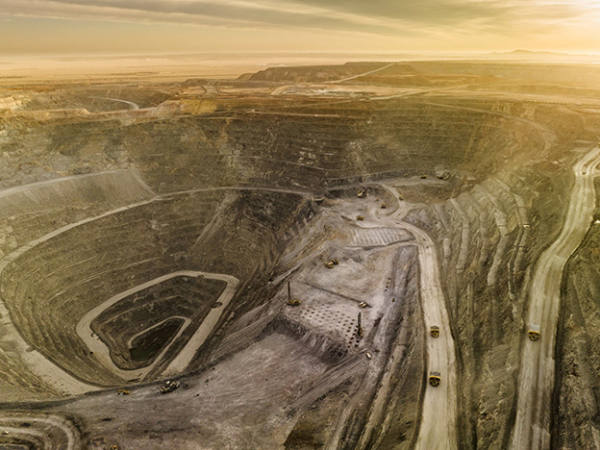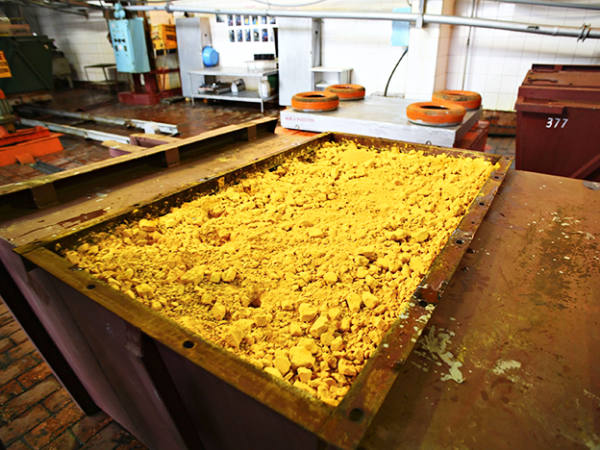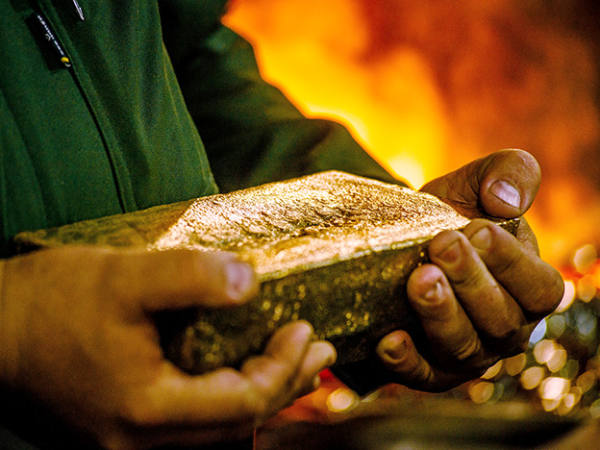A looming embargo on nuclear fuel supplies from Russia could lead to much higher uranium prices as the long-term outlook for nuclear energy strengthens thanks to the surge in spending on zero-emissions technology.
The EU’s 10th sanctions package against Russia is set to include an embargo on enriched uranium supplies that are “very significant for Western nuclear plants, including those in the US, France and several Eastern European countries”, according to Citi analyst Arkady Gevorkyan.
The European Parliament recently passed a resolution calling for sanctions to be broadened to include Russia state-owned nuclear energy firm Rosatom, and reiterated its call for “an immediate and full embargo on imports of fossil fuel and uranium from Russia”.
In the US, a ban is currently being discussed in Congress.
After the European Parliament’s motion passed, Rosatom issued a statement arguing for nuclear energy to be kept “outside of politics”.
At face value, Russia is a relatively small player in the uranium market – responsible for around 6 per cent of global supply. However, it provides about 15 per cent of the US’s uranium and 20 per cent of the European Union’s, said Roberta Caselli, a commodities research analyst at Global X, an exchange traded funds (ETF) provider with a Uranium ETF (US:URA).
More importantly, it is the world’s biggest supplier of the enriched uranium used by nuclear power plants, supplying around 43 per cent of the global total, she added. Therefore, any embargo would affect the broader market, “making it even tighter than it is at the moment”, Caselli said. “This would definitely support uranium prices.”
Fuelling disquiet
Implementing bans is unlikely to be straightforward, though. Many countries have reactors that were built by Russia, and Rosatom is currently the sole supplier of fuel to its older VVER-440 reactors used by Bulgaria, the Czech Republic, Finland, Hungary and Slovakia, according to S&P Global.
Exclusions would probably be provided to these countries if an EU-wide ban was introduced, according to Gevorkyan.
The difficulty faced by countries in weaning themselves off Russian supplies is evidenced by the fact that although Western uranium enrichers and utilities companies have been “self-sanctioning” this year, deliveries both to Europe and North Amercia are continuing, Gevorkyan said.
“European and US utilities are racing to reduce and perhaps eliminate their dependence on Russia, but a lack of Western conversion and enrichment capacity has complicated this,” said William Freebairn, a senior editor at S&P Global Commodity Insights.
“Governments in France, the UK and the US are considering significant investments to boost this capacity, but it will take years to do so.”
Enrichment isn’t the only area where more investment is needed. Most of Europe’s reactors were built in the 1980s and 1990s, with an anticipated lifespan of around 40 years, meaning decisions need to be made on whether plants are extended, replaced or substituted with other forms of power, according to S&P Global. In Western Europe, 11 per cent of capacity is set to be lost by the end of this decade, and 26 per cent by 2040.
The Intergovernmental Panel on Climate Change estimates that nuclear’s share of the overall energy mix will remain constant at about 10 per cent of a market where demand is forecast to grow at about 2.1 per cent a year, according to Bloomberg New Energy Finance. Around $100bn-$150bn (£82bn-£124bn) a year needs to be spent on nuclear plants over the next decade, according to the IPCC. Last year, only $50bn was invested, according to Liberum.
Attitudes to nuclear power appear to be shifting among both governments and financiers (see box below). The European Union classified nuclear as a “transition” activity under its green taxonomy classifications last year, while the US promised tax credits for companies that can produce zero-emission nuclear power under the Inflation Reduction Act.
The UK set out its energy security strategy in April last year, pledging to grow the amount of power generated by nuclear to 25 per cent, from 15 per cent currently. Two large reactors, Hinkley Point C and Sizewell C, each with a capacity of 3,200MW, are currently in development at a combined cost of almost £50bn. The government has also provided a £200mn grant to a consortium led by Rolls-Royce (RR) to develop small modular reactors. The first of these will be capable of generating 470MW and will cost $2bn-$2.5bn.
The formation of a new industry body, Great British Nuclear, has faced delays, though, and the consortium’s chief executive, Tom Samson, has sought greater urgency, telling the Financial Times last month that spending the next two years deciding where the next reactor should be placed would not help to “get a nuclear megawatt on the grid as quickly as possible”.
Eastern promise
The greatest demand for nuclear is being driven by Asia. Japan had planned to phase out nuclear power after the accident at the Fukushima nuclear plant in 2011. However, last year it approved rules that will allow it to extend the lifespan of its current plants. China, meanwhile, is building at a rapid pace. It currently has around 53 operational facilities but “has this huge and ambitious programme to build 150 reactors in the next 15 years”, Global X’s Caselli said.
Citi said there are 23 plants under construction in China currently. While those will stay out of reach of investors, Liberum’s analysts point to utilities as (listed) beneficiaries of the increased investment in the long run, including EDF (FR:EDF), E.ON (DE:EOAN) and BKW (CH:BKW) as European operators that all currently generate more than 20 per cent of power from nuclear.
In the short to medium term, companies that build and maintain plants, such as Babcock (BAB), Balfour Beatty (BBY) Costain (COST) and Kier (KIE), should win more work, they added.
However, the companies most likely to witness immediate gains from supply disruption are the uranium miners and investors.
Yellow Cake (YCA), which buys and holds physical uranium, increased the size of a share placing to $75mn from $50mn earlier this month, due to “considerable” investor demand, according to chief executive Andre Liebenberg.
The money will mainly be used to exercise options allowing it to buy 1.35mn pounds (lb) of uranium from the world’s biggest producer – Kazakhstan’s state-owned nuclear operator Kazatomprom – at the spot price of $48.90 per lb, bringing its total holding to around 20.2mn lbs. The company has an option to buy $100mn of uranium each year until 2027 at spot prices under its agreement with Kazatomprom. Spot has hovered around the $50 per lb mark so far this year, but three- and five-year contract prices currently stand at $57 and $61 per lb, respectively, the company said.
BofA Securities analysts estimate that uranium prices will climb to around $58 per lb this year and $66.25 in 2024, a significant increase on pre-2022 prices, which were often below $30 per lb.











